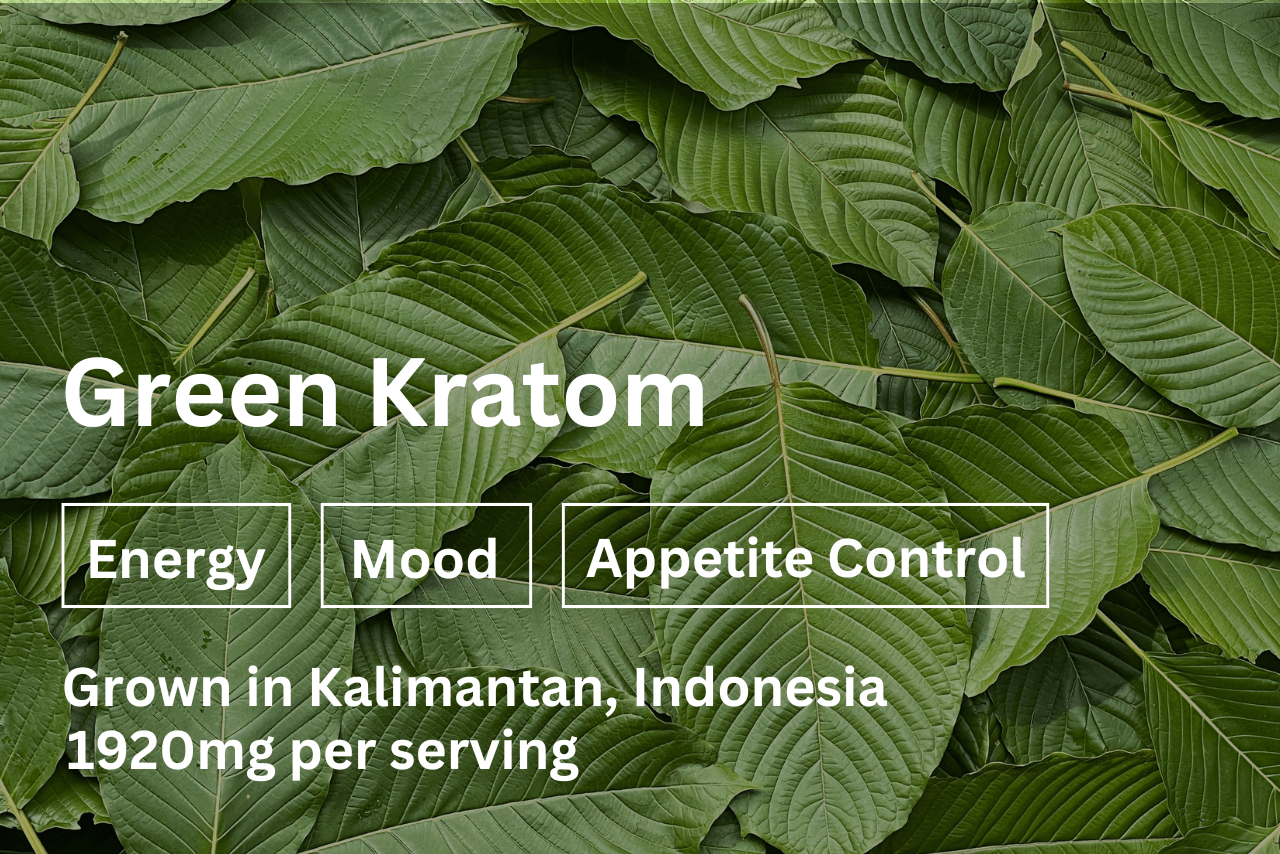Contents
Kava vs Kratom: Benefits and Differences
- Written by David
- Updated on April 23, 2025
- Published on
- Kratom Strains Explained
TL;DR
Kava and kratom are popular natural remedies, each offering unique benefits. Kava, derived from the root of the Piper methysticum plant, is celebrated for its calming effects, helping reduce anxiety and promote relaxation. In contrast, kratom, sourced from the leaves of the Mitragyna speciosa tree, provides energy and relief, with effects varying by dosage. Understanding their differences can help you choose the right one for your needs—whether you seek tranquility or a boost in mood and energy.
When it comes to natural relaxation and focus, kava and kratom are always in the mix. Both are plant based and have their own properties that have gained popularity for their benefits. But while they seem similar at first glance, they serve very different purposes and affect your body in different ways.
Knowing the differences between kava and kratom will help you decide which one is for you. Whether you’re looking to unwind after a long day or need a energy and mood boost, knowing what each offers is key. Let’s get into what sets them apart so you can make an informed decision.
What is Kava And Kratom?
Kava and kratom are plant based substances used for their effects on the mind and body. Both are popular but have very different origins and characteristics.
Origins And History
Kava comes from the root of the Piper methysticum plant, native to the South Pacific. Pacific Island cultures have used kava for over 3,000 years in ceremonial and social settings, to relax and be social.
Kratom is from the Mitragyna speciosa tree, found in Southeast Asia. For centuries, indigenous populations have consumed kratom leaves, often chewing or brewing them, to have extra energy during labor or to alleviate discomfort.
Plant Sources
Kava roots are the source of kava products. The Piper methysticum plant grows in tropical climates, mainly in Fiji, Vanuatu and Tonga.
Kratom leaves are the active ingredient. The evergreen Mitragyna speciosa tree is found in countries like Thailand, Indonesia and Malaysia, in humid tropical rainforests.
Effects And Benefits
Kava and kratom have different effects and benefits, for different needs. Knowing what each offers will help you decide which one is for you.
Kava: Relaxation
Kava is for calming without impairment of mental clarity. It interacts with GABA receptors in the brain, relaxing the nervous system. Users report less anxiety, more sociability and better sleep. Research shows kavalactones, the active compounds, reduce stress and mild anxiety. Traditional use is in ceremonial and social settings to feel connected and tranquil.
Kratom: Energy And Relief
Kratom has dual effects depending on the dose. Lower doses stimulate energy and focus by interacting with adrenergic and opioid receptors. Higher doses provide relief management and relaxation. Mitragynine and 7-hydroxymitragynine, the active alkaloids, affect discomfort and opioid like sensations. Traditionally used by laborers in Southeast Asia, kratom is to help endure physical activity and alleviate chronic discomfort.
How To Use And Consume
Kava and kratom are used and consumed very differently, which affects their effects, traditions and user preferences. Knowing these methods will help you decide based on convenience and what you want to achieve.
How Kava Is Used
Kava is traditionally consumed as a drink made from its root powder. You mix the kava powder with water and strain it to make a drink. This method of preparation comes from Pacific Island cultures where kava is a part of social gatherings and ceremonies.
In modern times kava is also available in pre-made drinks, capsules and tinctures for convenience. You can find kava tea bags, which makes preparation easier or kava extracts with concentrated active compounds for stronger effects. Many prefer the drink for relaxation and sociability, especially in ceremonial or evening settings.
How Kratom Is Used
Kratom is used in powdered form, brewed into tea or mixed with liquids like juice to mask the taste. Southeast Asian traditions involved directly chewing fresh kratom leaves, but this method is less common today.
You’ll find kratom in capsules, tablets and concentrated extracts in modern markets for precise dosing and portability. Many prefer kratom tea or toss-and-wash method where you swallow a spoonful of powder with water or another liquid. Its versatility allows for different doses for different effects, from stimulation at lower doses to sedation at higher doses.
Legal Status And Availability
Kava and kratom have different legal status that affects their availability worldwide. Laws vary by region, so availability and usage.
Kava Legal Status
Kava is legal in many countries, including the US where it’s a dietary supplement. In countries like Australia and Canada, there are restrictions on its sale and import, often requiring specific labeling or limiting the form of distribution. Some European countries like Germany and Switzerland banned kava due to liver related side effects but the restrictions have been lifted in recent years.
In South Pacific countries like Fiji, Vanuatu and Tonga, kava is cultural and widely available. International presence has grown because of its reputation for relaxation but availability depends on local laws on its use.
Kratom Legal Status
Kratom’s legal status is more complicated. In the US it’s legal federally but banned in several states like Alabama, Wisconsin and Vermont due to safety and dependency concerns. States like Florida and California regulate it at county or city level so it’s a patchwork of availability. The FDA classifies kratom as a dietary supplement but has issued warnings on its risks.
Internationally kratom is illegal in countries like Malaysia, Thailand (historically; though regulations have recently relaxed) and Australia. In Southeast Asia where kratom originated, regional laws vary greatly, often to ensure responsible use and public health.
Summary
- Kava and kratom are different: Kava from the root of Piper methysticum plant for relaxation and calmness, kratom from the leaves of Mitragyna speciosa for energy and relief management.
- Effects are very different: Kava for stress reduction, sleep and sociability, kratom for stimulation at lower doses and sedation and relaxation at higher doses.
- Different ways of consumption: Kava is traditionally consumed as a drink but modern forms are capsules and tinctures, kratom is often consumed as powder, tea or capsules for flexibility in dosing.
- Laws vary greatly: Kava is legal in many countries but regulated in some regions, kratom is more restrictive and inconsistent, some areas banned it.
Bottom Line
Ultimately, the choice between kava and kratom depends on your individual goals and preferences. If you’re looking for a natural way to boost energy, manage minor discomforts, or enhance your mood, kratom’s versatility and unique benefits make it a top option. Its ability to offer both stimulating and relaxing effects, depending on the strain, gives you the flexibility to fit your experience to your needs. No matter your choice, always consume in moderation, consider your health, and consult a healthcare professional if needed.
Stay informed, listen to your body, and make the decision that feels right for you. For more information on high-quality kratom products, visit Bagus Botanicals.
Shop our premium selection of kratom and start experiencing the benefits today!
FAQs
What’s the main difference between kava and kratom?
Kava is for relaxation and anxiety reduction, kratom is for stimulation at low doses and sedation at higher doses. They are used for different purposes and interact with the body differently.
Where does kava come from?
Kava is from the root of the Piper methysticum plant which is native to the South Pacific. It has been used for over 3,000 years in rituals, social gatherings and as a relaxation aid.
What is kratom made from?
Kratom is from the leaves of the Mitragyna speciosa tree which grows in Southeast Asia. It has been used traditionally for stamina and discomfort relief.
How is kava consumed?
Kava is traditionally consumed as a drink made from its powdered root. It’s also available in capsule, tincture and pre-made drink forms.
How is kratom consumed?
Kratom is often consumed as a tea made from its powdered leaves. It can also be taken in capsules, concentrated extracts or mixed with liquids to mask the bitter taste.
What are the side effects of kava?
Kava can cause drowsiness, headache and stomach discomfort. Long term or excessive use can cause liver toxicity and skin issues. Don’t mix with alcohol or other sedatives.
Is kava legal?
Kava is legal in the US and many other countries as a dietary supplement, some nations have restrictions. In South Pacific countries it’s a cultural item and widely available.
Can I take kava and kratom together?
Don’t take kava and kratom together. They interact with the central nervous system differently. Consult a professional before taking either one or both.
References
- National Institutes of Health (NIH). “Dietary Supplements Fact Sheets.” Accessed 12/24/2024. Available at: https://ods.od.nih.gov/factsheets/
- World Health Organization (WHO). “Assessment of Kava.” Accessed 12/24/2024. Available at: https://www.who.int/
- American Kratom Association (AKA). “Kratom Information.” Accessed 12/24/2024. Available at: https://www.americankratom.org/
- Journal of Ethnopharmacology. “Traditional Uses of Kava and Kratom.” Accessed 12/24/2024. Available at: https://www.journals.elsevier.com/journal-of-ethnopharmacology
- U.S. Food and Drug Administration (FDA). “Warnings and Updates on Kratom.” Accessed 12/24/2024. Available at: https://www.fda.gov/
- PubMed Central. “Studies on Kava and Kratom.” Accessed 12/24/2024. Available at: https://pubmed.ncbi.nlm.nih.gov/
- Kava Science. “Research on Kava’s Active Compounds and Uses.” Accessed 12/24/2024. Available at: https://kava.com/science/
- Kratom.org. “Educational Resources on Safe Kratom Usage.” Accessed 12/24/2024. Available at: https://www.kratom.org/




